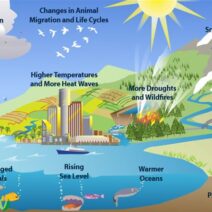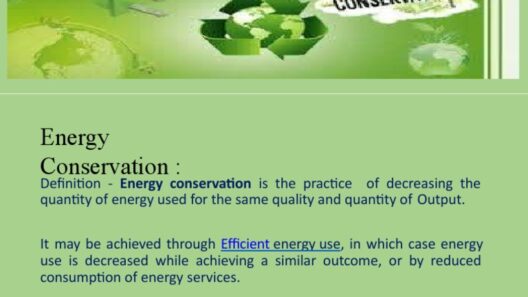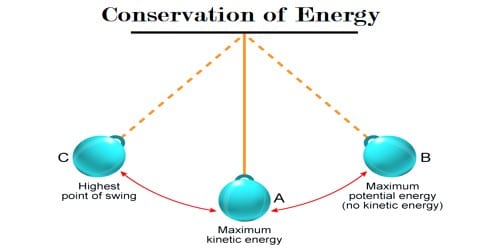Energy conservation in schools and classrooms is a pressing concern in our contemporary world, where climate change poses significant threats to the environment and humanity alike. Schools serve not only as educational institutions but also as formative environments influencing students’ perspectives on sustainability. The first step in fostering a culture of conservation is understanding how energy can be efficiently managed within these spaces.
To begin with, energy usage in schools often escalates due to outdated facilities and inefficient systems. Many educational institutions are housed in older buildings with inadequate insulation and archaic heating and cooling systems. Consequently, they are plagued by energy wastage. This scenario invites a closer examination of both infrastructure and habit. By conducting an energy audit, administrators can discern specific inefficiencies that are contributing to excessive energy consumption. This assessment provides a roadmap for implementing targeted improvements.
One effective strategy involves upgrading to energy-efficient lighting. Traditional incandescent bulbs consume excessive amounts of electricity, whereas LED (Light Emitting Diode) technology significantly reduces energy use while maintaining luminance quality. Schools transitioning to LED fixtures can see immediate reductions in energy costs. Moreover, employing natural light through window design can minimize reliance on artificial lighting during daylight hours, thus creating a more inviting and dynamic learning environment.
Heating, ventilation, and air conditioning (HVAC) systems also represent major contributors to a school’s energy footprint. Many schools can benefit from modernization by replacing outdated HVAC systems with high-efficiency models that adjust automatically to fluctuations in temperature and occupancy. Incorporating smart thermostats can enhance control over indoor climate settings, allowing for further energy savings. Moreover, regular maintenance of these systems is paramount; neglected equipment can lead to inefficiencies and higher energy demands.
Another critical area of focus is the integration of renewable energy sources. The advent of solar panel technology has made it increasingly viable for schools to harness sunlight as a clean source of energy. Installing solar photovoltaic systems can substantially reduce reliance on fossil fuels, decreasing both operational costs and the carbon footprint. Schools that adopt solar energy not only save money in the long term but also serve as pivotal learning tools, illustrating the tangible benefits of renewable energy to students.
In addition to systematic upgrades, cultivating a culture of energy conservation among students and staff is paramount. Education plays a vital role in influencing behavior. Schools can implement programs designed to promote awareness of energy consumption. Simple initiatives, such as turning off lights when leaving a room, utilizing natural ventilation where possible, and unplugging devices when they are not in use, can foster a sense of individual responsibility among the student body. By integrating energy conservation into the curriculum, teachers can instill long-lasting principles of sustainability in their students.
Behavioral change can be further enhanced through incentive programs. Schools could reward classes that demonstrate the highest commitment to energy saving practices. This competitive element not only engages students but also promotes teamwork and a sense of accomplishment. Such initiatives often extend beyond the classroom, influencing families and communities through shared experiences and newfound knowledge.
Implementing technology can also facilitate energy conservation. The use of smart meters and energy management software can help schools track energy use in real-time, enabling more informed decision-making. Data-driven insights can identify high consumption periods and opportunities for reduction. Through this analytic lens, educational institutions can optimize their energy usage patterns, leading to more sustainable operations.
In considering the structural layout of school environments, it is worth noting that compact, multi-use spaces can contribute to conservation efforts. Reimagining school designs to create flexible learning environments can reduce the energy overhead associated with heating and cooling separate rooms. Such designs promote collaboration and reduce energy waste, all while enhancing the educational experience itself.
It is important to recognize that energy conservation is not simply a series of isolated actions; it is a multifaceted approach requiring commitment from all stakeholders. School boards, administrative staff, and parents must work collaboratively to establish a culture where sustainability is paramount. This endeavor can include setting ambitious, but attainable, energy reduction goals. Strategic planning sessions that involve input from various community members can create an inclusive environment where everyone feels invested in the outcome.
In conclusion, the necessity for energy conservation in schools and classrooms cannot be overstated. The integration of energy-efficient technologies, educational initiatives, and community involvement is essential to create lasting change. By adopting rigorous energy conservation measures, schools can transform into bastions of sustainability, reducing their carbon footprints while simultaneously educating future generations about the importance of stewardship over our planet’s resources. The impact of these efforts extends far beyond the classroom, as empowered students may carry these principles into their homes and communities, fostering a broader cultural shift towards sustainability.







